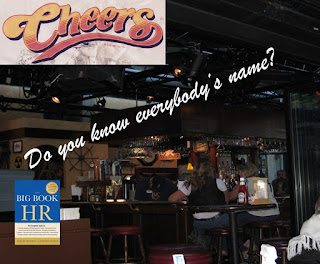When I fly, I always try to get an aisle seat. When I fly with my husband, I try to
get aisle seats across from each other.
Sometimes it doesn't work, but I always opt for two aisle seats, even if
we're separated.
On a recent flight, he was across the aisle, but a
row behind me. During the boarding
process – we were fortunate to have boarded and got settled in early – I turned
to ask him something. Before I could turn back around in my seat, I heard the
man in the middle seat next to him ask, "Is
that your wife? Does she want to sit here?" He was practically
levitating out of his seat! You good see the glee in his face. It was saying, "Yes, I can get out of the dreaded
middle seat!" My husband
very kindly responded, "Thanks, but
she fine where she's sitting."
This got me thinking about organizations and the
people who work for them. More
specifically, I got to thinking about the different roles people occupy in
organizations. Just like on
planes, there are those very desirable, very visible, first-class roles. These are the ones which typically get
exposure and recognition – the sales person or team who brings in the big
account or closes the big deal.
Then there are those still desirable roles in the second tier (translate
– economy class) such as the aisle seats which may be occupied by team leaders,
or window seats which attract individuals who may want a wide-angle view,
perhaps those individual contributors.
Finally, there are the dreaded middle seats – nothing glamorous about them,
but they serve the purpose of getting the individual to their destination.
Middle-seat roles in organizations serve the
purposes of the individual and the organization. The individual has the opportunity to make a living,
hopefully a decent one. If he or
she is fortunate, it may be a way to develop some skills that will help with
advancement. These roles are often
support positions, positions that are vital to keep the organization working – facilities,
production support, administrative services are just a few departments that
come to mind. Are the people who
work in these departments visible?
The CEO of a mid-sized organization in a
metropolitan city became aware that as the firm grew, he no longer knew
everyone by name. He made it a
point to not only be more visible but make sure that the employees in those
middle seats were visible. Twice a
month he'd make time to walk though those departments where he didn't have much
daily interaction – those support departments – and stop to chat with as many
employees as time permitted. At
his quarterly, all-staff meetings, he began to recognize not only the
individuals in first class roles who brought in the revenue, but those in
support roles. "Great job by the account managers, but
they couldn't have done their job without the infrastructure we have in place.
So I'd like to recognize our facilities department, led by Joe. Joe, would you and your team please
stand? Let me take a moment to acknowledge each of you." He'd
introduce each member by name and say something about them. It was so simple and it didn't cost
anything. The return on his
investment of a little time and effort was great. The organization’s turnover was lower than industry average.
For leaders, it's important to move out of the first-class
positions and find out more about what's going on in the middle seats. Recognition is a priceless reward. Like Norm on the TV show Cheers, people
want a place where everybody knows your name. Make your organization that place for your employees!


No comments:
Post a Comment